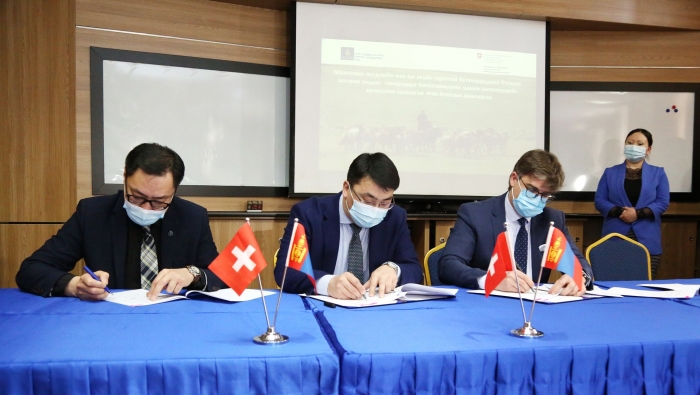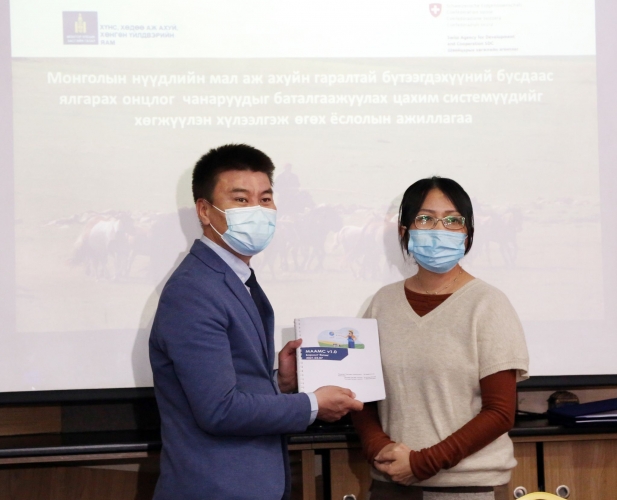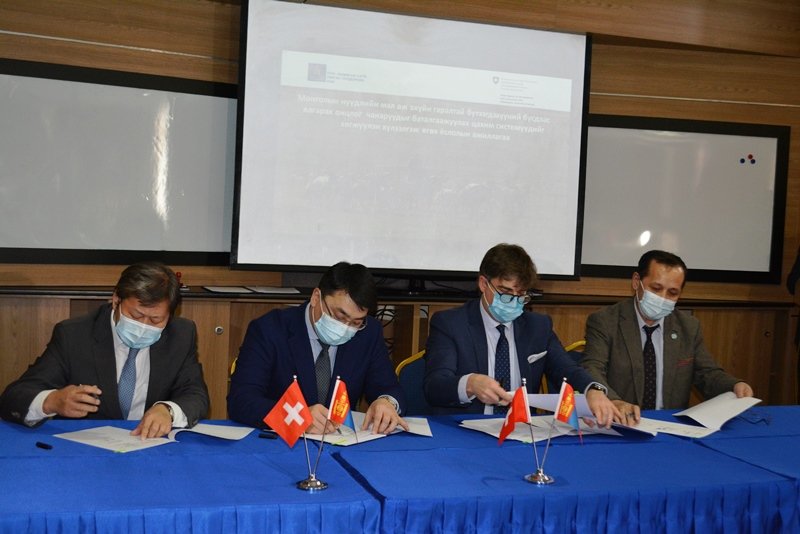
10 March, Ulaanbaatar city. Over centuries, nomadic herders of Mongolia have developed numerous experience and knowledge in their endeavor to maintain a harmonious co-existence with fragile and sensitive ecosystem of dry and semi dry rangelands. However, with overgrazing and the deterioration of rangelands, this ecosystem is now in danger. In the long run, severe degradation of rangelands can lead to a drastic reduction of income both for herders and for Mongolia, as Agriculture including herding is the 2nd pillar of the national economy. As part of its comprehensive approach to respond to this complex issue, the 15 years-long Green Gold and Animal Health Project funded by the Swiss Agency for Development and Cooperation (SDC) has developed a full traceability system called Responsible Nomads. SDC’s share of ownership on 3 of its digital modules: a Animal Husbandry Welfare Information System, a Herd Management Planning System and a Milk Supply Traceability System, are today handed over to the Mongolian Ministry of Food, Agriculture and Light Industry.
These traceability systems provide stakeholders with the tools to appreciate best practices of nomadic livestock herding; enable them to source their livestock raw materials from nomadic herders who maintain healthy rangeland and treat their livestock responsibly. They moreover promote the value chain of livestock products that incentivize improvements in animal care and land management.
Animal Husbandry Welfare Information System
The Animal Husbandry Welfare Information System was designed to develop the structure and methodology of information exchange between provincial and local herder organizations involved in animal husbandry, and to strengthen their capacity to receive and monitor information on animal welfare in a timely manner, paving the way for the digitalization of the livestock sector.
Animal welfare indicators are chosen in consultation with herders and local specialists based on local best practices and traditional knowledge, and highly resilient capacity of local livestock’s breeds to climatic and rangeland conditions of the country.
Herd Management Planning System
At a time when the number of livestock exceeds the carrying capacity of rangelands on one hand, and the quality and value of livestock and the derivated products face a decline in terms of productivity and performance, the new web-based Herd Management Planning System represents an important and timely move toward progress.
The adoption of the Herd Management Planning System creates a variety of possibilities and practical applications for livestock production planning in a science-based and integrated manner. For example: adjusting herd size to suit the carrying capacity of rangelands.
Milk Supply and Traceability System
The Milk Supply and Traceability System has been developed and designed to link herders and dairy farmers to new markets, validating the origin and quality of their raw materials.
The Milk Supply and Traceability System allows producers to register the milk supplied to processing factories and provides milk quality and safety assurance information to consumers, covering the entire milk supply chain - from herders and dairy farmers to end users.
This System has been upscaled and used by eight domestic milk processing companies selected for the implementation of a milk subsidy program for herders, dairy farmers, and intensive farming businesses. As a result, more than 2,500 herders and dairy farmers registered in the system are receiving government subsidies for traceable, high quality milk supplied to processing companies.
The system ensures the commercial provision of milk and dairy products that offer information on rangeland status, animal welfare, animal health, the quality of livestock raw materials, environmental conditions, and information about the responsibility of herders and dairy farmers.














